Mankato, Minnesota 作者: 来源: 发布时间:2021-11-09
I.Population and Area
₋Area
Land: 19.04 sq mi (49.31 km2)
₋Population
Total: 39,309
Density: 2,254.78/sq mi (870.59/km2)
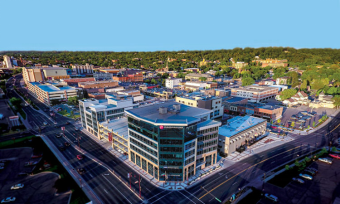
II.Natural Geography
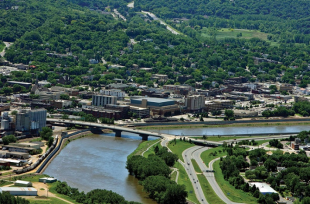
Street View
₋Mankato (/mænˈkeɪtoʊ/ man-KAY-toh) is a city in Blue Earth, Nicollet, and Le Sueur counties in the state of Minnesota. The population was 39,309 according to the 2010 census, making it the fifth largest city in Minnesota outside the Minneapolis–Saint Paul metropolitan area. It is along a large bend of the Minnesota River at its confluence with the Blue Earth River. Mankato is across the Minnesota River from North Mankato. Mankato and North Mankato have a combin ed population of over 56,500 according to the 2018 census estimates. It completely encompasses the town of Skyline. North of Mankato Regional Airport, a tiny non-contiguous part of the city lies within Le Sueur County. Most of the city is in Blue Earth County.
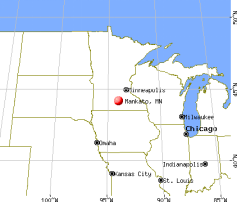
₋Mankato is the larger of the two principal cities of the Mankato-North Mankato metropolitan area, which covers Blue Earth and Nicollet counties and had a combined population of 94,149 at the 2010 census. The 2018 Census estimate is 101,647. The U.S. Census Bureau designated Mankato a Metropolitan Statistical Area in November 2008.
₋In 2017, Schools.com named Mankato the second-best small college town in the United States.
III.ECONOMY
₋The average salary in Mankato, MN is $17.08. Trends in wages decreased by -100.0 percent in Q2 2020. The cost of living in Mankato, MN is 6 percent higher than the national average. The most popular occupations in Mankato, MN are Administrative Assistant, Certified Nurse Assistant (CNA), and Licensed Practical Nurse (LPN) which pay between $11.97 and $27.37 per year. The most popular employers in Mankato, MN are Mayo Clinic, Taylor Corp., and Mankato Clinic, Ltd..
₋Website: https://www.payscale.com/research/US/Location=Mankato-MN/Salary
IV.Industrial Characteristics
₋Greater Mankato is multifaceted geographic hub for:
₋Manufacturing: Extensive Supply Chain, with a particularly strong presence in Metal Manufacturing & Fabrication, Power Generation Manufacturing, Electronic Manufacturing Services, Renewable Energy, Printing and Warehousing Distribution
₋Agribusiness: Magnet of activity for agriculture related business, as well as producers who travel many miles to do business in Greater Mankato
₋Health Care: Regional headquarters for Mayo Clinic Health System and Mankato Clinic and also home to the renowned Orthopedic & Fracture Clinic and Rivers Edge Health Center
₋Education: Home to 5 colleges — Bethany Lutheran College, Gustavus Adolphus College, Rasmussen College, South Central College and Minnesota State University, Mankato — with a total annual enrollment of more than 25,000 students
₋Website: https://greatermankato.com/key-industries
V.Attractions
1.Sibley Park
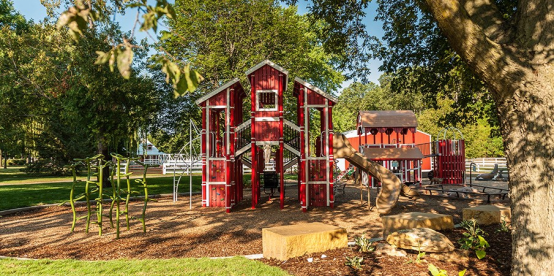
₋Sibley Park is a city park located at the convergence of the Minnesota and Blue Earth Rivers in Mankato, Minnesota.
₋The park was established in 1887 and was named for the state's first governor Henry Hastings Sibley. The park is split into two sides with a hill separating the two sides. The front side has a band shell, a petting zoo, and large lawn area. There are numerous gardens and walking trails through the park. The river side of the park has a view of the river along with sledding hills during the winter, and softball fields and tennis courts during the summer months. There are also a playground and barbecue pits.
₋The park stands on the site of a defining incident of the Sioux Uprising of 1862, in which then Colonel Henry Sibley (after whom the park is named), condemned 303 voluntarily surrendered Sioux men to death by hanging following a series of cursory sham trials, after personal written assurances from Sibley to treat fairly those who had presented themselves under a white flag. Abraham Lincoln personally requested the hanging be delayed until the cases could be reviewed, but under pressure from advisors, he summarily decided that only rapists should be hanged. As there were only 2 identified cases of rape among the 303, which would not satisfy the desire for retribution of the settlers, Lincoln reviewed the cases and personally drew up a list of 38 Sioux, who were hanged in downtown Mankato. The park takes up an area of approximately 100 acres (0.40 km2).
₋Address: 900 Mound Ave, Mankato, MN 56001, United States
₋Phone: +1 507-387-8600
₋Website: https://www.mankatomn.gov/city-services-a-z/city-services-n-z/parks/sibley-park
2.Mount Kato
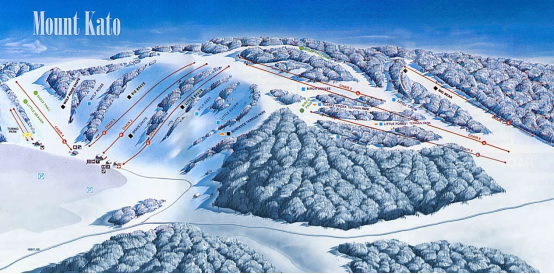
₋Mount Kato is a winter sports facility in Minnesota, offering facilities for skiing, snowboarding, snow tubing and mountain biking. Mount Kato offers 19 trails on 55 skiable acres. Mount Kato has a vertical drop of 240 feet (73 m). It is located just south of the city of Skyline in the Mankato metropolitan area.
₋Address: 20461 State Hwy 66, Mankato, MN 56001, United States
₋Top elevation: 256 m
₋Phone: +1 507-625-3363
₋Website: https://www.mountkato.com/
3.Children's Museum of Southern Minnesota
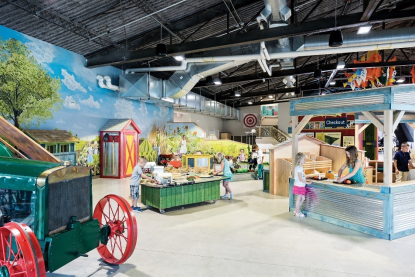
₋Children's Museum of Southern Minnesota (CMSM) is a children's museum located in Mankato, Minnesota. It features regularly scheduled art and science activities.
₋Indoor exhibits include an interactive quarry, a tree made of tree forts, and a vertical wind-tunnel. The museum offers seasonal farm exhibits outdoors during the warmer months.
₋A group of educators began efforts to open a children's museum in 2009. In the summer of 2014, flood waters damaged the museum's planned exhibits. After rebuilding the exhibits, CMSM opened on the 1st of May, 2015.
₋The chosen site of the museum required extensive cleanup in partnership with the Minnesota Pollution Control Agency. With funding from a grant, over 2,500 tons of polluted soil and waste were removed. The existing building was made safe for renovation and use.
₋Address: 224 Lamm St, Mankato, MN 56001, United States
₋Phone: +1 507-386-0279
₋Website: https://www.googleadservices.com/pagead/aclk?sa=L&ai=DChcSEwjp38rf7YTrAhXNn7MKHTZOBpcYABAAGgJxbg&ohost=www.google.com&cid=CAESQOD278-8kOkXRt9TuMtaaqDK4BZ_T4JPPsTTLbxMdXWVDnGzAwOXavZaJefBmSJPCXoIX88RQ5t6NPrS6-802Jg&sig=AOD64_1X76Cuq_81FlFW864ZZQlg_AuM9w&q&adurl&ved=2ahUKEwjaz7_f7YTrAhWYg3IEHYfPAZwQ0Qx6BAgZEAE
VI.History
₋The area was long settled by various cultures of indigenous peoples. After European colonization began on the East Coast, pressure from settlement and other Native American tribes caused various peoples to migrate into the area. By the mid-19th century, four Dakota language–speaking divisions of the Dakota Sioux were the primary indigenous group.
₋Mankato Township was not settled by European Americans until Parsons King Johnson in February 1852, as part of the 19th-century migration of people from the east across the Midwest. New residents organized the city of Mankato on May 11, 1858. The city was organized by Henry Jackson, Parsons King Johnson, Col. D.A. Robertson, Justus C. Ramsey, and others. A popular story says that the city was supposed to have been named Mahkato, but a typographical error by a clerk established the name as Mankato. According to Warren Upham, quoting historian Thomas Hughes of Mankato, "The honor of christening the new city was accorded to Col. Robertson. He had taken the name from Nicollet's book, in which the French explorer compared the 'Mahkato" or Blue Earth River, with all its tributaries, to the water nymphs and their uncle in the German legend of Undine.'...No more appropriate name could be given the new city, than that of the noble river at whose mouth it is located." While it is uncertain that the city was intended to be called Mahkato, the Dakota called the river Makato Osa Watapa (meaning "the river where blue earth is gathered"). The Anglo settlers adapted that as "Blue Earth River". According to Frederick Webb Hodge, in his Handbook of American Indians North of Mexico, Volume 1, page 801, the town was named after the older of the two like-named chiefs of the Mdewakanton division of the Santee Dakota, whose village stood on or near the site of the present town.
₋Ishtakhaba, also known as Chief Sleepy Eye, of the Sisseton band of Dakota Indians, was said to have directed settlers to this location. He said the site at the confluence of the Minnesota and Blue Earth Rivers was well suited to building and river traffic, and yet safe from flooding.
₋On December 26, 1862, the US Army carried out the largest mass execution in U.S. history at Mankato following the Dakota War of 1862. Thirty-eight Dakota Native Americans were hanged for their parts in the uprising. A military tribunal had sentenced 303 to death, but President Lincoln reviewed the record and pardoned 265, believing they had been involved in legitimate defense against military forces. Episcopal Bishop Henry Benjamin Whipple had urged leniency in the case, but his position was not politically popular in Minnesota, nor was Lincoln's intervention. Two commemorative statues stand on the site of the hangings (now home to the Blue Earth County Library and Reconciliation Park).
₋In 1880, Mankato ranked fourth in size in the state. The population was 5,500.
₋Former Vice President Schuyler Colfax died while traveling in Mankato on January 13, 1885.
VII.Other Information
₋Education
₋The Mankato Area Public Schools are consolidated to include the cities of Mankato, North Mankato, Eagle Lake, and Madison Lake. There are ten elementary schools (Franklin, Eagle Lake, Kennedy, Washington, Roosevelt, Jefferson, Monroe, Hoover, Rosa Parks, and Bridges); two middle schools (Dakota Meadows Middle School and Prairie Winds Middle School); and two high schools (Mankato West High School and Mankato East High School).
₋Mankato has four parochial schools: Loyola Catholic School, Immanuel Lutheran Grade School and High School (K–12), Mount Olive Lutheran School (K–8) and Risen Savior Lutheran School (K–8). There is also a public charter school, Kato Public Charter School. The alternative school Central High, on Fulton Street, is another educational option.
₋The Blue Earth County Library, part of the Traverse des Sioux Library System, serves the city.
₋Higher education institutions
₋Minnesota State University was opened as the second state normal school in 1868 and is the second largest university in the state of Minnesota by enrollment. With an annual operating budget of over $200 million, Minnesota State provides a net economic benefit of over $452 million annually to Minnesota's south-central region. It is one of the largest employers in the Mankato area.
South Central College
Bethany Lutheran College
Rasmussen College
VIII.Contact Information
Government
Type: City charter
Mayor: Najwa Massad
City Hall
Address:
Intergovernmental Center
10 Civic Center Plaza
Mankato, Minn., 56001
See Website for more directory: https://www.mankatomn.gov/how-do-i/contact
